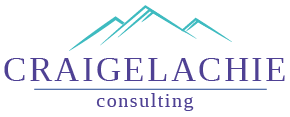I’ve been told “be more strategic”: what can I do?

In my Executive Coaching practice clients often want to work out how to address feedback they have been given. My start point is to encourage the client to approach the feedback with curiosity, not defensiveness: in particular, ask for examples of the skill which they are being asked to develop, ideally specific behaviours, so that they understand exactly what is expected of them.
A particular bugbear is the feedback “you need to be more strategic” as all-too-often this feedback sounds ‘meaningful’ but is given without any clarification of what “more strategic” actually looks like. Based on the work of my coachees and my own experience here are some common questions and potential answers.
What is ‘strategic thinking’?
In simple terms, strategic thinking involves looking beyond the immediate situation, often towards the longer-term, typically by:
- Elevating yourself from day-to-day matters and aligning your role and priorities with the organisation’s strategy.
- Holding a holistic view of your organisation’s ecosystems, stakeholders and wider marketplace.
- Anticipating major shifts, identifying emerging opportunities and threats and responding appropriately.
What behaviours help me think and act strategically?
1. Make time for strategic thinking: Block space in your calendar to protect time for strategic thinking. To create that capacity delegate more – empower your team to take on tasks which offer them a learning opportunity. Review your calendar and look for meetings you can delegate or which you simply don’t need to attend. Get comfortable with appreciating that thinking = working: all-too-often we feel that being busy = working. As a reminder of this, I like the Abraham Lincolm quote “Give me six hours to chop down a tree, I will spend the first four sharpening the axe”.
2. Focus: Identify and focus on a small number of key issues or projects which lie within your scope and advance the organisation’s core objectives. Ask yourself “what are the 3 most important things I need to accomplish in this role?” Get comfortable saying ‘no’ and pushing back on competing demands which will distract your attention and resources from these key priorities.
3. Insights: Be proactive about connecting with others both inside and outside your organisation to understand their observations of the market, drivers, competitors, trends. Be curious: ask questions, test your assumptions and invite feedback, particularly from those who hold different perspectives to your own. Arm yourself with insights from data and this research which predict where to best focus resources – ie money and people – and be prepared to make tough calls about where to reduce resources to be able to support the key priorities.
4. Solutions-focused: Don’t call out problems, bring solutions. Share your insights to call out what is going well and what could be better (a more positive lens than ‘a problem’) and present the solutions you have considered to address the ‘what could be better’. Encourage experimentation to try out new ideas and adjust according to the outcome. Build a common understanding of what’s possible, lead discussions of options, and frame decisions and actions in the language of the organisation’s strategy.
What else should I do?
Last month I published a LinkedIn piece ‘Know and promote your value’, highlighting that finding a way of ensuring others clearly see the value you bring is essential to professional progression. Hold this advice in mind as you go through your journey of ‘being more strategic’ ensuring that others now see your ability to think and act strategically, bringing value to the wider organisation.
P.S. The photo was taken during a fabulous visit to the Darks Arts Distillery in the lovely Scottish town of Kirkcudbright. I can definitely recommend Kirkcudbright (known as ‘the Artists’ Town), a visit to the distillery, and their wonderful gins! Dark Art Distillery Andrew Clark Hutchison
